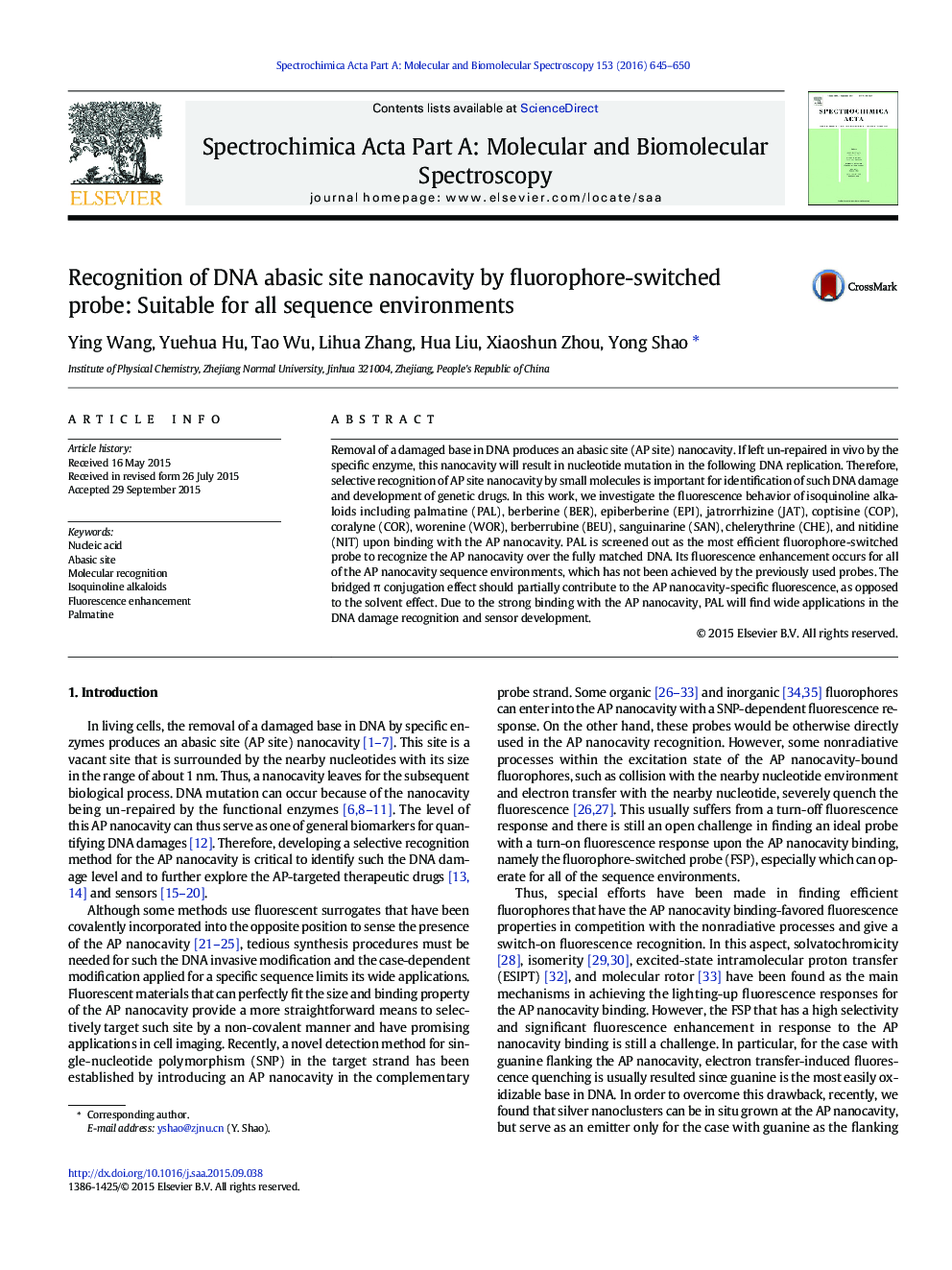| Article ID | Journal | Published Year | Pages | File Type |
|---|---|---|---|---|
| 1228776 | Spectrochimica Acta Part A: Molecular and Biomolecular Spectroscopy | 2016 | 6 Pages |
•The switch-on fluorescence recognition of the DNA abasic nanocavity is investigated with 11 isoquinoline alkaloids.•Palmatine is the most efficient emitter in recognizing the AP nanocavity over the fully matched DNA.•The fluorescence switch-on recognition is suitable for all the nanocavity sequence environments.
Removal of a damaged base in DNA produces an abasic site (AP site) nanocavity. If left un-repaired in vivo by the specific enzyme, this nanocavity will result in nucleotide mutation in the following DNA replication. Therefore, selective recognition of AP site nanocavity by small molecules is important for identification of such DNA damage and development of genetic drugs. In this work, we investigate the fluorescence behavior of isoquinoline alkaloids including palmatine (PAL), berberine (BER), epiberberine (EPI), jatrorrhizine (JAT), coptisine (COP), coralyne (COR), worenine (WOR), berberrubine (BEU), sanguinarine (SAN), chelerythrine (CHE), and nitidine (NIT) upon binding with the AP nanocavity. PAL is screened out as the most efficient fluorophore-switched probe to recognize the AP nanocavity over the fully matched DNA. Its fluorescence enhancement occurs for all of the AP nanocavity sequence environments, which has not been achieved by the previously used probes. The bridged π conjugation effect should partially contribute to the AP nanocavity-specific fluorescence, as opposed to the solvent effect. Due to the strong binding with the AP nanocavity, PAL will find wide applications in the DNA damage recognition and sensor development.
Graphical abstractFigure optionsDownload full-size imageDownload as PowerPoint slide
